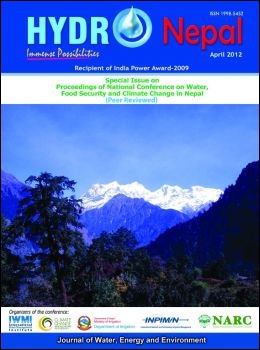Adapting Climate Change in Agriculture: The Sustainable Way in Nepalese Context
DOI:
https://doi.org/10.3126/hn.v11i1.7222Keywords:
Agricultural crops, temperature, precipitation, sustainable agricultural technologies, food sovereignty, NepalAbstract
Nepalese agriculture is still subsistence and traditional in nature, which makes it highly vulnerable to effects of climate change. The major impacts on agriculture from climate change are due to the pattern of rainfall and increased temperature. The increased temperature, in the longer term, has negative impact on crop yield through increased rate of respiration and evapo-transpiration process causing moisture deficit in the soil and plant system due to more emission of green house gases. Under changing precipitation trends, water harvesting is crucial to facilitate water availability. An integration of agriculture with forest, agro-forestry, can be effective to mobilize local capacities in relation to climate regulation. It is indeed necessary to formulate an integrated action plan for agricultural development in which adaptation strategies are embedded within the local spatial planning in consideration of economic, social and political context. The best adaptation measure to secure against climate change is to promote the principles and practices of sustainable agricultural technology among all farmers from marginalized to capitalized ones. More importantly, the promotional technologies of sustainable soil management, ecological practices of pest management, and participatory promotion of local varieties or landraces are the major adaptive mechanism to revive our agriculture from the impacts of climate change. Such practices are helpful to promote the concept of food sovereignty, which is utterly important in the developing countries like Nepal, rather than food security.
DOI: http://dx.doi.org/10.3126/hn.v11i1.7222
Hydro Nepal Special Issue: Conference Proceedings 2012 pp.91-94
Downloads
Downloads
Published
How to Cite
Issue
Section
License
The copyright of the articles and papers published is held by HYDRO Nepal Journal.
The views and interpretation in this journal are those of author(s), and HYDRO Nepal does not bear any responsibility for the views expressed by authors in the journal.




